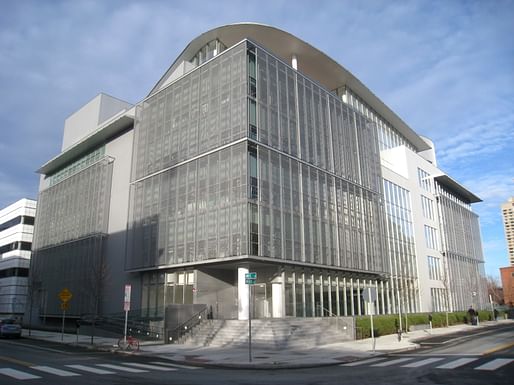anchor
Fumihiko Maki, 1928-2024. Image: © PLANE—SITE
Fumihiko Maki, the 1993 Pritzker Prize laureate and a leading figure in Japan’s Metabolism movement, passed away in Tokyo on June 6th, his Maki and Associates firm announced late Tuesday. He was 95.
Maki was born in Tokyo in 1928 and immigrated to America to study at the Cranbrook Academy of Art and then the Harvard GSD, working in the New York offices of Skidmore, Owings, and Merrill (SOM) and for Josep Lluís Sert’s Cambridge, Massachusetts studio before returning to Japan to found his own practice in 1965.
Online, Maki is being remembered for his many varied important works spread across three continents. Fans will recall his visionary contribution to the rich lineage of residential architecture in his home country, most notably the multiphase Hillside Terrace Apartments (completed between 1967 and 1992) that garnered several awards, including the country’s prestigious Minister of Education Award for Fine Arts in 1973.

The diverse body of civic designs and public buildings that helped cement his reputation include the Aga Khan Museum in Toronto, Tokyo Metropolitan Gymnasium, Osaka Prefectural Sports Center, and Yerba Buena Center for the Arts in San Francisco.
Recently his 4 World Trade Center design, completed in November of 2013, was received as a “deft, thoughtful” contribution to the site’s regenerative master plan by critic Christopher Hawthorne. Maki’s list of noted academic work includes a 2009 MIT Media Lab expansion, Steinberg Hall at Washington University in St. Louis, and the Brutalist 1960 Nagoya University Toyoda Memorial Hall, which stands today as his first completed project in Japan.

“He is a modernist who has fused the best of both eastern and western cultures to create an architecture representing the age-old qualities of his native country while at the same time juxtaposing contemporary construction methods and materials,” his official Pritzker Prize jury citation reads. “Maki has expressed his constant concern for the ‘parts’ and the ‘whole’—describing one of his goals as achieving a dynamic equilibrium that includes sometimes conflicting masses, volumes, and materials.”
Maki was also named the winner of the AIA Gold Medal in 2011.

